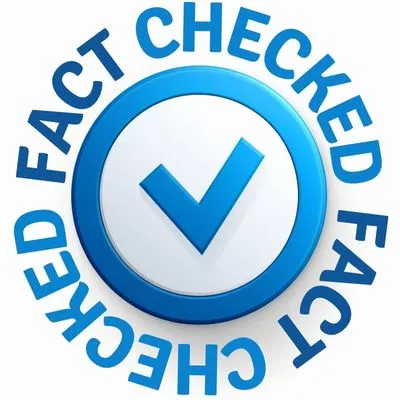Google Organizational Structure: Everything You Need To Know

Published July 16, 2025
What makes Google not just a tech giant, but the tech giant? It all begins with Google’s organizational structure. Unlike traditional corporations, Google has built an innovative structure and culture that fuels its unmatched creativity and global dominance.
In this post, we’ll explore how Google’s unique setup, from its flat hierarchy to its cross-functional teams, empowers rapid innovation and bold thinking. Curious how the organizational structure of Google drives success across products like Gmail, Pixel, and Google Maps?
Whether you’re a business leader or curious reader, this guide to the Google structure will give you everything you need to know, and maybe a few surprises.
Google’s Structure: Built to Disrupt
Google isn’t just organized, it’s engineered for innovation. From its earliest days, Google’s organizational structure has defied convention. While most companies adhere to rigid hierarchies, Google has opted for a more flexible and flat organizational structure.
It developed a cross-functional structure, designed to break down silos and empower collaboration. Teams are organized by product, but also layered with functional expertise, including engineering, design, and marketing.
This hybrid of flat and matrix design has one goal: to unlock creativity at scale. The result? Seamless teamwork across Gmail, Google Maps, and Pixel. Google’s structure isn’t just unique, it’s its secret weapon in a world demanding constant reinvention.
The Flatline Experiment: A Bold Failure
In the early 2000s, Google launched a radical experiment: eliminate all middle managers. The result? Chaos. Engineers had no support, no direction, and even approached co-founder Larry Page for help with minor issues.
While the flat organizational structure of Google was intended to foster creativity, it hindered progress. Eventually, the company reversed course. The lesson? Management matters, but only when it’s intentional, supportive, and strategic.
This bold misstep helped Google realize the value of striking a balance: combining authority with autonomy. And from this failure, the Google structure evolved into something far more powerful, blending leadership with independence.

Project Oxygen: Data-Driven Management
Google doesn’t make leadership decisions on gut instinct, it uses data. Enter Project Oxygen, a year-long internal study designed to define what makes a great manager. The surprising insight? Managers do matter, but only when they coach rather than control.
Based on Oxygen’s findings, Google developed a framework of eight essential behaviors, ranging from empowering teams to demonstrating genuine interest in well-being. This wasn’t just theory, it reshaped the organizational structure of Google.
Even skeptical engineers bought in, because the insights were measurable. The takeaway? Google’s structure isn’t static; it evolves based on evidence. It’s management by design, not by tradition.
OKRs: The Fuel Behind Google’s Focus
Google’s ambitious goals demand crystal-clear focus. That’s why it embraced OKRs, Objectives and Key Results. Introduced by venture capitalist John Doerr, OKRs became the backbone of how Google aligns its massive workforce.
Every employee, from intern to CEO Sundar Pichai, writes and shares their OKRs on a quarterly basis. This transparent goal-setting system drives accountability, clarity, and engagement. Within the Google organizational structure, OKRs aren’t just motivational, they’re operational.
They ensure that teams across products, from Android to Google Cloud, move in sync. Google isn’t just structured to collaborate, it’s structured to aim high and hit targets with laser precision.
Culture and Structure: The Dynamic Duo
An effective structure means nothing without the culture to support it. At Google, structure and culture are deeply intertwined. The company’s flat communication style encourages open dialogue across ranks.
Employees are trusted to solve problems and even allowed to fail in the process. The social, hands-on culture fuels the experimental mindset that the Google structure was designed to support.
Perks like free meals, shuttle buses, and collaborative spaces aren’t just flashy, they’re tools that reinforce a community of shared purpose. Here, culture isn’t just a buzzword. It’s the beating heart of how Google organizes, operates, and innovates.
Alphabet: A New Chapter in Structure
In 2015, Google underwent another transformation, this time on a corporate level. It created Alphabet Inc., a parent company designed to separate core products (Google Search, YouTube, Ads) from moonshot ventures, such as Waymo and Verily.
This restructuring allowed each entity to operate with greater focus and agility. The Google structure became just one branch of a much larger tree. It was a strategic move to improve transparency, attract investors, and incubate high-risk ideas without jeopardizing Google’s core.
This bold evolution demonstrates how Google’s organizational structure adapts not only internally but also at the highest levels of strategy.

How Google Solves Problems, Together
When Google faces a challenge, it doesn’t assign it, it shares it. One legendary example? Printing unsolved problems on posters and hanging them in employee kitchens. The goal is to invite anyone to contribute a solution.
This grassroots, open-door approach to problem-solving is deeply ingrained in Google’s organizational structure. Issues aren’t locked in silos, they’re community puzzles waiting to be solved.
From expenses to engineering hurdles, passionate problem-solvers emerge from unexpected places. The message? At Google, your title doesn’t define your value, your ideas do. This radical transparency fuels faster resolutions and builds a stronger, more cohesive workforce.
Google’s Structure in Action: Real-World Impact
Google’s unique structure isn’t theoretical, it drives real impact. Take Chrome, for example. Under Sundar Pichai’s leadership, a cross-functional team made it the world’s dominant browser in under three years.
The project’s success wasn’t just about vision, it was about a structure that allowed marketing, engineering, and UX to collaborate seamlessly. Or consider Google Maps, where product managers, AI researchers, and field teams unite under one goal.
The organizational structure of Google doesn’t just enable products, it accelerates them. The real measure of structure isn’t how it looks on paper, it’s how it performs in the world. Google passes that test daily.
What You Can Learn from Google’s Structure
You don’t have to be a tech titan to learn from Google’s blueprint. The Google structure teaches us that innovation thrives in environments that combine freedom with accountability. Create space for risk, but define clear objectives.
Break down silos, but give teams purpose. Google experimented, failed, adapted, and succeeded. Whether you run a startup or a team of five, the principles behind Google’s organizational structure can apply.
Focus on clarity, autonomy, and collaboration. The result? A team that doesn’t just work, they thrive. Because in the end, it’s not about mimicking Google, it’s about adopting what makes it excel.
FAQs
What type of organizational structure does Google use?
Google uses a cross-functional structure. This means people from different departments work together in teams. The Google organizational structure enables them to solve problems and build new things more efficiently.
What are organizational units in Google?
Organizational units at Google are like small groups or teams. Each unit has a specific task, such as working on Gmail or Google Maps. These units are part of the big Google structure.
What is the internal structure of Google?
At Google, people work in teams based on their job roles (such as engineers or designers) and projects. This type of organizational structure enables Google to remain both creative and organized. Everyone knows their role, but they work together.
Why does Google have a flat structure?
Google has a flat structure that allows workers to share ideas easily. There are fewer bosses so people can make decisions quickly. This part of the Google organizational structure helps them move fast and stay smart.
What is Google’s management style?
Google’s managers guide more than they boss. They help their teams grow, solve problems, and feel supported. This style is a key component of Google’s organizational structure.
Final Thoughts
Google’s success didn’t happen by luck. Its smart organizational structure helped people work together, share ideas, and solve big problems. Google allows teams from different departments to work on the same projects. This makes the company fast, creative, and ready for anything.
If you want your business to grow like Google’s, you need the right structure and the right team to help you achieve it. Correct Digital can build your website, run your ads, and create effective marketing plans that drive results.
We help small businesses succeed online every day. Let us help you do the same.
Hire The Digital Marketing Experts
We take online businesses and turn them into online empires by employing smart digital marketing strategies. Our team of experts are trained in a myriad of marketing skill including SEO to help you rank higher in search results, and ad management to ensure your message gets seen by the people you want. Need a business website that attracts business? We also specialize in website design and online sales optimization to help your business grow like never before.

This Content Has Been Reviewed For Accuracy By Experts
Our internal team of experts has fact-checked this content. Learn more about the editorial standard for our website here.

About The Author
Rei Bayucca has a wealth of knowledge and experience as a professional writer for multiple industries. It is her mission to ensure that her readers receive high-quality, informative content that is both entertaining and educational. Through her writing, Rei aims to educate and motivate readers.



